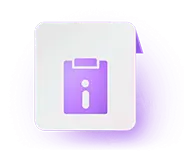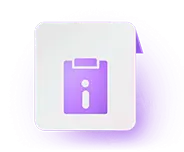CBSE 2025 Sample Papers for Class 11: One of the best methods to score excellent marks in Class 11 final exam is to solve as...

CBSE Sample Papers for Class 11 2025: Download Subject-wise PDFs
February 18, 2025
The Directorate of School Education, Arunachal Pradesh, conducts the annual exams for Class 11. The Class 11 exams in Arunachal Pradesh Board are usually held in March/April, and the results are announced in May/June. Thousands of students from Arunachal Pradesh schools take the Class 11 exams in different streams like Arts, Science, and Commerce every year.
The Arunachal Pradesh Board prescribes the State Council of Educational Research and Training (SCERT) curriculum for its affiliated schools. The Class 11 exam is conducted by adhering to the rules of the board. Students are advised to regularly visit this page for the latest Arunachal Pradesh Class 11 information.
The Arunachal Pradesh State Council of Education designs the curriculum and publishes textbooks for its affiliated schools. Arunachal Pradesh Board Class 11 is an important stage of education for students in the state. The syllabus for Class 11 includes subjects such as Maths, Physics, Chemistry, Biology, and English, among others. To get scores in the exams, students should focus on understanding concepts, regular practice, and revision.
It is also essential to take care of mental and physical health, maintain a study plan, and seek help from teachers or tutors when needed. Hence, Arunachal Pradesh Board Class 11 provides a strong foundation for students to pursue higher education and career opportunities. In addition to providing textbooks, the Directorate of School Education in Arunachal Pradesh offers merit-based scholarship programs to deserving students.
Before getting into the other details, let us have an overview of the exam:
| S.No | Exam particulars | Exam Details |
|---|---|---|
| 1 | Name of the Exam | Arunachal Pradesh Board 11th exam |
| 2 | Organizing Authority | Directorate of School Education, Arunachal Pradesh (DSEAP) |
| 3 | Exam Date | March |
| 4 | Result Date | May 2025 (Tentative) |
| 5 | Mode of Registration | Online |
| 6 | Mode of the Declaration of Results | Online |
| 7 | Official website | http://education.arunachal.gov.in/index.php |

The Directorate of School Education, Arunachal Pradesh Class 11 syllabus consists of all the subjects and the topics of the exam. Knowing the Arunachal Pradesh Board Class 11 syllabus will help students know the topics they will learn throughout the academic year. It is very important for the students to prepare a strong study plan covering the whole syllabus to do well in the 11th class exams and get admission to Class 12.
The Arunachal Pradesh maths syllabus for class 11 is designed to provide students with a strong foundation in mathematical concepts and problem-solving skills. The syllabus is structured in a way that helps students develop critical thinking and analytical abilities, which are essential for success in higher education and various careers.
|
Chapters |
Topics |
|
Set and Function Sets Relation and Function Trigonometric Functions |
Sets and their representation Finite and Infinite sets Empty sets Equal sets Subsets Subsets of a set of equal numbers Power sets Universal sets Venn diagrams Union and Intersection of sets Difference of sets Complement of Sets Properties of Complement Ordered pairs Cartesian product of sets Cartesian products of real of sets with itself Definition and range of Relation Domain, Codomain Pictorial diagrams Functions, domain and range with real values Polynomial, rational, modulus, signum, exponential, logarithmic and largest integer functions Sum, difference, product and quotient of these functions |
|
Algebra Principles of Mathematical Induction Complex Numbers and Quadratic Equations Linear Inequalities Permutation and Combinations Binomial Theorem Sequences and Series |
Simple uses of Mathematical induction principle Linear inequalities Number line representation of algebraic solutions of Linear inequalities in one variable Linear inequalities in two variables graphically solved Linear inequalities in two variables using graphical techniques |
|
Coordinate Geometry Straight Lines Conic Sections Introduction to Three dimensional Geometry |
Brief recall of two dimensional geometry The slope of lines and the angles between two lines Various forms of equations of a line General equation of a line Equation of family of lines passing through the point of intersection of two lines Distance of a point from a line Coordinate axes and coordinate planes in two dimensions Coordinates of a point Distance between two points and sections formula |
|
Calculus Limits and Derivatives |
Derivative introduced as a rate of change Limitation is an intuitive concept Polynomial and Rational function limits Trigonometric, exponential and logarithmic functions Scope of tangent of the curve Derivative of sum, difference, product and quotient of functions Polynomial and trigonometric functions have derivatives |
|
Mathematical Reasoning |
Mathematically sound statements Validating claims containing linking words Contradiction, contrast and contrapositive |
|
Statistics and Probability Probability |
Measures of Dispersion Range Mean deviation Variance and Standard deviation of grouped and ungrouped data Frequency distribution with the same mean but different variances Random experiments, outcomes and sample spaces Axiomatic probability Connections with other theories of earlier classes Probability of an event |
The Arunachal Pradesh Physics syllabus for Class 11 helps students develop a fundamental understanding of the subject. The syllabus covers various topics such as mechanics, thermodynamics, optics, and electromagnetism.
|
Chapters |
Topics |
|
Physical world and measurement Physical world Units of measurement |
Nature of physical laws Physics, technology and society Units of measurement SI units Fundamental and Derived Units System of Units Length, mass and time measurement Errors in measurement Accuracy and precision of measuring instruments Dimensions of physical quantities Dimensional analysis and its applications |
|
Kinematics Motion in a straight line Motion in a Plane |
Motion in a straight line Position-time graph Speed and Velocity Average speed and instantaneous velocity Relations for uniformly accelerated motion General vectors and their notations Equality of vectors Multiplication of vectors by real numbers Addition and subtraction of vectors Resolution of a vector in a plane Scalar and vector products of vectors Unit vector |
|
Laws of motion |
Intuitive concept of Force Newton’s first law of motion Newton’s third law of motion Inertia Impulse Equilibrium of concurrent forces Static and kinetic friction Laws of friction Rolling friction Lubrication |
|
Work, energy and power |
Work done by constant force and variable force Work energy theorem Power Kinetic energy Potential energy of a spring Motion in a vertical circle Notion of potential energy Non conservative forces Elastic and inelastic collisions in one and two dimensions |
|
Motion of a system of particles and rigid body System of particles and rotational motion |
Center of mass of a 2 particle system Center of mass of a rigid body Center of mass of a uniform rod Law of conservation of angular momentum and its applications Equilibrium of rigid bodies Rigid body rotation and equations of rotational motion Comparison of linear and rotational motion Moment of inertia Radius of gyration Moment of force, torque and angular momentum Value of moments of inertia for simple geometrical objects Statement of parallel and perpendicular axes theorem and its applications |
|
Gravitation |
Kepler’s laws of planetary motion Universal law of gravitation Acceleration due to gravity and its variation with depth Orbital velocity of a satellite Escape velocity Geostationary satellites Gravitational potential energy and gravitational potential Effect of gravity on fluid pressure |
|
Properties of bulk matter Mechanical properties of solids and fluids Thermal properties of matter |
Elastic behavior Stress strain relationship Pressure due to a fluid column Poisson’s ratio Pascal’s law and its application Heat Temperature Thermal expansion Thermal expansion of solids, liquids and gases Anomalous expansion of water Specific heat capacity Change of state- Latent heat capacity |
|
Thermodynamics |
Thermal equilibrium and change of temperature First law of thermodynamics Isothermal and adiabatic processes Heat, work and internal energy Second law of thermodynamics Reversible and irreversible processes Heat engine and refrigerator |
|
Kinetic theory of gases and behavior of perfect gases |
Equation of the state of a perfect gas, work done in the compressing of gas Kinetic theory of gases Assumptions Degrees ofdom Law of equipartition of energy Concept of mean path Avogadro’s number Kinetic interpretation of number Rms speed of gas molecules |
|
Waves and oscillations |
Periodic motion- Time period Displacement as a function of time Periodic functions Simple harmonic motion and its equation Phase Oscillations of a loaded spring Forces and force constant Reflection of light Spherical mirrors Total internal reflection and its applications Refraction of light Refraction at spherical surfaces Lenses Thin lens formula Lensmaker’s formula Magnification Power of a lens Refraction and dispersion of light through prism |
The Arunachal Pradesh Board Class 11 Chemistry syllabus can be interesting and fun. It includes various topics that will need to be performed in the laboratory for better clarity and understanding of the chapter. Refer to the table below for the syllabus:
|
Chapters |
Topics |
|
Some basic concepts of Chemistry |
Importance and Scope of Chemistry Nature of matter Laws of Chemical combination Dalton’s atomic theory Concept of elements- Atoms and molecules Atomic and molecular masses Mole concept and mole mass Percentage composition Empirical and Molecular formula Chemical reactions Stoichiometry and calculations based on stoichiometry |
|
Structure of atom |
Discovery of electrons, protons, and neutrons Isotopes and Isobars Atomic number Thomson’s model and its limitations Rutherford’s model and its limitations Bohr’s model and its limitations Dual nature of matter and light De Broglie’s relationship Concept of orbitals |
|
Classification of elements and periodicity in properties |
Brief history of the development of the periodic table Significance of classification Modern periodic law and present form of periodic table Ionic radii Inert gas radii Ionization enthalpy Electron gain enthalpy Electronegativity Valency |
|
Chemical bonding and molecular structure |
Ionic bond Covalent bond Bond parameters Covalent structure of Ionic bond Valence bond theory Molecular orbital theory of homonuclear diatomic molecules Hydrogen bond |
|
States of matter- Gases and liquids |
Three states of matter Intermolecular interactions Types of bonding Boyle’s law Charles law Intermolecular interactions Melting and boiling points Empirical derivation of gas equation Deviation from ideal behavior Liquid state- vapour pressure Viscosity and surface tension |
|
Basic principles and techniques of organic chemistry |
General introduction Methods of purification Qualitative and quantitative analysis Resonance and hyperconjugation Classification and IUPAC nomenclature of Organic compounds Inductive effect Electromeric effect Homolytic and heterolytic fission of a covalent bond Carbocations Carbanions Types of organic reactions Electrophiles and nucleophiles |
|
Hydrogen |
Position of hydrogen in the periodic table Properties and uses of hydrogen Isotopes Preparation Physical and Chemical properties of water Hydrides Reactions and structure and use of hydrogen as |
|
Chemical thermodynamics |
System concepts and time Work, heat, and energy Internal energy and Enthalpy Measuring U and H Atomization Sublimation Combustion Phase transition Ionization Second law of Thermodynamics Gibbs energy change for spontaneous and non-spontaneous processes Introduction of entropy as a state of function Third law of Thermodynamics |
|
Equilibrium |
Equilibrium physical and Chemical processes Law of mass action Equilibrium constant Dynamic nature of equilibrium Factors affecting equilibrium Ionization of Polybasic acids Acid strength Henderson equation Polybasic product Concept of pH |
|
Redox reactions |
Concept of oxidation and reduction Redox reaction Oxidation number Loss and gain of electrons and change of oxidation number Application of redox reactions |
|
s-Block elements |
Introduction Group 1 and Group 2 elements Electronic configuration Occurrence Diagonal relationships Anomalous properties of the first element of each group Trends in property variation Trends in chemical reactivity with oxygen Hydrogen, halogens and its applications Water |
|
p-Block elements |
Introduction to p-block elements Overview, electronic configuration, occurrence, configuration,anomalous features of group’s founding element,chemical reactivity trends of Group 13 elements Anomalous features of Group’s founding element- Boron Group 14 elements- Overview, electronic configuration, occurrence, configuration,anomalous features of group’s founding element,chemical reactivity trends Allotropic structures Physical and Chemical characteristics Carbon catenation |
|
Hydrocarbons |
Classification of hydrocarbons Aliphatic hydrocarbons Alkanes- Nomenclature,physical properties, chemical reactions, Isomerism Alkenes- Geometrical isomerism, Nomenclature,geometrical isomerism, physical properties,methods of preparation, chemical reactions, Ozonolysis, mechanism of electrophilic addition Alkynes- Nomenclature, triple bond structure, physical features, methods of synthesis,acidic character of alkynes, addition reactions of hydrogen, halogens, hydrogen halides and water |
|
Environmental Chemistry |
Environmental pollution Air,water and soil pollution Major atmospheric pollutants Depletion of ozone layer Chemical reactions in atmospheric smog Greenhouse effect and global warming Green chemistry as an alternative tool for reducing pollution Strategies for control of environmental pollution Pollution due to industrial wastes |
By referring to the syllabus, studying for Arunachal Pradesh Board Class 11 Biology will help students understand what they must study and what not. Each of these will help students gain an understanding of their learning schedule and the approach they must take towards the exam. Refer to the table below for the detailed Biology syllabus for Arunachal Pradesh Board Class 11:
|
Units |
Topics |
|
Diversity of living organisms |
The living world Biological classification- Five kingdom classification Plant kingdom- Salient features and classification of plants into major groups-Algae, Bryophyta, Pteridophyta, Gymnosperms and Angiosperms Animal kingdom- Salient features and classification of animals into non-chordates(upto phyla level) and Chordates (upto class level) |
|
Structural organizations in Animals and Plants |
Morphology of flowering plants Anatomy of flowering plants Structural organization in animals |
|
Cell structure and function |
Cell- The Unit of life Biomolecules- Chemical constituents of living cells Cell cycle and cell division- Mitosis, Meiosis and their significance |
|
Plant physiology |
Transport in Plants- Movement of water, gases and nutrients Mineral nutrients- Essential nutrients, micronutrients, micronutrients and their role Photosynthesis in Higher Plants, Factors affecting photosynthesis Respiration in Plants- Exchange of gases Plant growth and development |
|
Animal physiology |
Digestion and absorption Breathing and exchange of gases Body fluids and Circulation Excretory products and their elimination Locomotion and movement Neural control and coordination Chemical coordination and integration |

To maximise scores in Arunachal Pradesh Board class 11, students should create a study plan that includes regular practice and revision. They should focus on understanding concepts and applying them to solve problems rather than rote memorization. Below we have provided a detailed study plan and preparation tips that can be helpful for the students.
The preparation tips are meant to help students learn everything they have to for the exams in an easy manner. Students who will be taking the Arunachal Pradesh Board 11th exam are advised to refer to the below-mentioned study plan to perform well in the exam:
A detailed study plan helps students systematize their studies to learn the concepts efficiently. It acts as a roadmap to help students reach their goals. Below are a few tips that students can follow to devise a detailed study plan for their exams.

Here is a list of frequently asked questions on Arunachal Pradesh Board Class 11 exams.
Q: Where can I find mock tests and sample questions for the Arunachal Pradesh Board Class 11 exams?
Ans: Students can access practice questions and mock tests on Embibe. They can also customise the practice and mock tests as per their preference.
Q: What are the benefits of studying from Embibe for Arunachal Pradesh Board Class 11?
Ans: Embibe provides many study resources for all board Class 11 exams. Students can take mock tests, access 3D video lessons, solve sample questions, practice previous years’ papers, and much more. Studying for the Arunachal Board Class 11 exam from Embibe allows students to understand each concept in detail and solve relevant sample problems to build a strong foundation.
Q: What is the minimum passing percentage for Arunachal Pradesh Board Class 11?
Ans: To pass the Arunachal Pradesh 11th examinations, a minimum of 33 per cent out of 100 is necessary for each subject.
Q: Which Arunachal Pradesh Board Class 11 Psychology books should I refer to?
Ans: AP Board Class 11 students can refer to the books: Introduction to Psychology, Manovigyan and Nafsiyaat for Psychology.
Q: Where can I get the Arunachal Pradesh 11th class mark sheet?
Ans: Students can collect their Arunachal Pradesh Board Class 11 mark sheet from the respective schools.

Arunachal Pradesh is one of the states in the southeast where the education system is steadily developing as a result of central and state government project initiatives. To help parents choose the best schools for their children. We have created a list of some of the top schools.
| School | Board | Type |
|---|---|---|
| Kendriya Vidyalaya, Kimin | CBSE | Co-ed |
| Kendriya Vidyalaya, Tezu | CBSE | Co-ed |
| Name of the School | Location |
|---|---|
| Arunachal Pali Vidyapith | Lohit |
| Assam Rifles Secondary School | Changlang |
| Boum Kakir Mission School | Papum Pare |
| Boum Kakir Mission School | West Siang |
| Chow Nanda Memorial School | Lohit |
| Chow Nanda Memorial School | Tirap |
| Donyi Polo Mission School | Papum Pare |
| Donyi Polo Vidya Bhawan | Papum Pare |
| Ramakrishna Mission School | West Siang |
| Ramakrishna Mission School | West Kameng |
| Ramakrishna Sarada Mission Girls School | West Kameng |
| Royal International School | Papum Pare |
| Sneha School | Changlang |
| Tomi English Medium School | West Siang |
| Vivekanand Kendra Vidyalaya | East Kameng |
| Vivekanand Kendra Vidyalaya | Lohit |
| Vivekanand Kendra Vidyalaya | Papum Pare |
| Vivekanand Kendra Vidyalaya | West Siang |
| Vivekanand Kendra Vidyalaya | Changlang |
| Vivekanand Kendra Vidyalaya | Lower Subansiri |
| Name of the School | Location |
|---|---|
| Govt. Primary School, Langkho | East Siang |
| Govt. Middle School, Mebo | East Siang |
| KGBV, Mebo | East Siang |
| Govt. Middle School, Motum | East Siang |
| KGBV. Motum | East Siang |
| Govt. Middle School, Kiyit | East Siang |
| Indira Gandhi Govt. Middle School,Pasighat | East Siang |
| Govt. Sawmill Middle School, Pasighat | East Siang |
| Govt. Primary School,Tajum, Pasighat | East Siang |
| Govt. Gandhi Middle School, Pasighat | East Siang |
| Govt.Town Middle School, Pasighat | East Siang |
| Govt. Middle School, Upper Nyopin | Kurung Kumey |
| Govt. Higher Secondary School, Lower Nyopin | Kurung Kumey |
| Govt. Primary School,Gaga Village | Kurung Kumey |
| Govt. Primary School, Dolo Village | Kurung Kumey |
| Govt. Middle School, Panung | Kurung Kumey |
| Govt. Middle School, Chebang | Kurung Kumey |
| Govt. Middle School, Jamin | Kurung Kumey |
| Govt. Middle School, Dui | Kurung Kumey |
| Govt. Middle School, Meer | Kurung Kumey |
| Govt. Middle School, Rengchi | Kurung Kumey |
| Govt. Primary School, Koleriang Town | Kurung Kumey |
| Govt. Middle School, Nikja Village | Kurung Kumey |
| Govt. Middle School, Sarli | Kurung Kumey |
| Govt. Higher Secondary School, Sangram | Kurung Kumey |
| Govt. Middle School, Oyan | East Siang |

The preparation for most higher education certificates and diplomas begins with Class 11, which is one of the preparation steps. The syllabus and preparation for Class 11 can help students clear several national-level exams and enroll in various courses for a bright future.
Let us take a look at the several national competitive examinations that are accessible after Class 11:
| Stream | Exam |
|---|---|
| Engineering | Joint Entrance Examination (JEE) Main JEE Advanced Birla Institute of Technology and Science Admission Test (BITSAT) entrance exam COMED-K IPU-CET (B. Tech) Manipal (B. Tech) VITEEE AMU (B. Tech) NDA Entrance with PCM (MPC) |
| Medical | National Eligibility Cum Entrance Test (NEET) AIIMS JIPMER |
| Defence Services | Indian Maritime University Common Entrance Test Indian Navy B.Tech Entry Scheme Indian Army Technical Entry Scheme (TES) · National Defence Academy and Naval Academy Examination (I) |
| Fashion and Design | National Institute of Fashion Technology (NIFT) Entrance Test National Institute of Design Admissions All India Entrance Examination for Design (AIEED) Symbiosis Institute of Design Exam Footwear Design and Development Institute Maeer’s MIT Institute of Design National Institute of Fashion Design National Aptitude Test in Architecture Center for Environmental Planning and Technology (CEPT) |
| Social Sciences | Banaras Hindu University IIT Madras Humanities and Social Sciences Entrance Examination (HSEE) TISS Bachelors Admission Test (TISS-BAT) |
| Law | Common-Law Admission Test All India Law Entrance Test (AILET) |
| Science | Kishore Vaigyanik Protsahan Yojana (KVPY) National Entrance Screening Test (NEST) |
| Mathematics | Indian Statistical Institute Admission Admissions to Universities Various B.Sc Programs Banasthali Vidyapith Admission |
